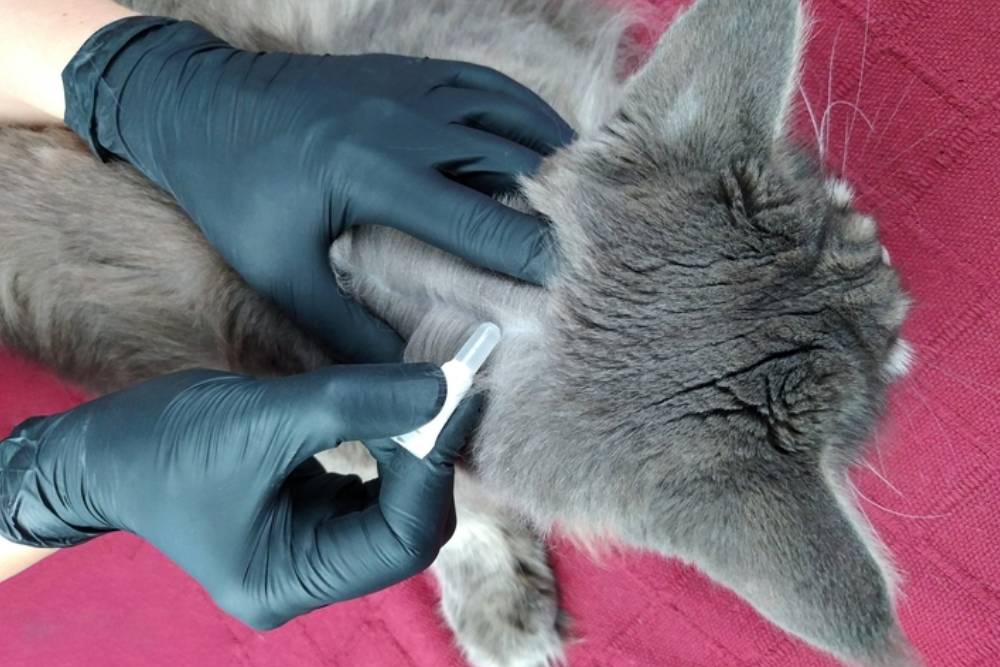Fleas and ticks are more than a seasonal nuisance—they’re parasites that can pose serious health risks for both pets and people. Left unchecked, these pests can lead to skin infections, disease transmission, and ongoing discomfort for your dog or cat.
At Lewiston Veterinary Clinic, we believe that consistent prevention is the best defense. Here’s what every pet owner should know about protecting their animals from fleas and ticks year-round.
Why Flea and Tick Prevention Matters
Both fleas and ticks are external parasites that feed on blood. Beyond being uncomfortable, their presence can have real medical consequences.
Key Health Risks:
- Flea Allergy Dermatitis: A common allergic reaction in both cats and dogs, leading to severe itching and secondary skin infections.
More on flea allergy dermatitis - Flea-Transmitted Diseases: Fleas are also known carriers of tapeworms (Dipylidium caninum), which pets can contract through ingestion during grooming. In cats, fleas can transmit Bartonella henselae, the bacteria responsible for cat scratch disease, which can also be transmitted to humans.
- Tick-Borne Illnesses: Ticks can transmit diseases such as Lyme disease and ehrlichiosis, many of which have long-term health effects if not diagnosed early.
Learn about Lyme disease in dogs
- Zoonotic or Human Diseases: Some parasites and the illnesses they transmit can affect humans, too.
Explore zoonotic risks from Cornell
Recognizing a Parasite Problem
Signs of a Flea Infestation:
Fleas can be difficult to spot—but their effects on your pet are often easier to recognize.
- Persistent scratching or biting, particularly near the base of the tail
- Patchy hair loss or skin irritation
- Tiny black specks in the coat (flea dirt)
- Pale gums or lethargy in severe cases, especially in puppies or kittens
Fleas move quickly through the fur and are often hard to see directly. In many cases, you’ll notice the effects before spotting the fleas themselves—such as hair loss, irritated skin, or the presence of flea dirt.
If you are seeing live fleas, there is a strong likelihood that an active infestation is already underway, both on your pet and in your home environment.
Signs of a Tick Infestation:
- Visible ticks attached to the skin (commonly near ears, toes, or neck)
- Lethargy, fever, or loss of appetite
- Limping or joint swelling, which can be signs of a tick-borne illness
If you observe any of these signs, schedule an exam so we can confirm the cause and begin treatment if needed.
Diagnosing Flea and Tick Issues
At Lewiston Veterinary Clinic, our approach includes:
- Comprehensive Physical Examination to check for external parasites and skin conditions
- Bloodwork to detect tick-borne diseases early
- Skin Scrapings or Cytology to rule out other causes of itching
Treatment and Prevention Options
Veterinary-Recommended Preventatives
- Topical Solutions: Applied to your pet’s skin for monthly or multi-month protection
- Oral Medications: Chewable tablets that offer convenience and long-lasting coverage
- Flea and Tick Collars: Gradually release parasite-repelling agents over several months
We’ll help you select the most effective and safe option based on your pet’s age, weight, medical history, and lifestyle.
Managing the Home Environment
- Wash bedding and soft surfaces weekly in hot water
- Vacuum carpets, furniture, and baseboards frequently
- Use pet-safe yard treatments to reduce outdoor exposure
The Importance of Year-Round Protection
Even in colder months, fleas and ticks can survive indoors or during warm spells. Year-round prevention ensures your pet stays protected regardless of the season.
See AAHA’s recommendations for ongoing parasite protection

At-Home Tips for Prevention
- Groom pets regularly, checking high-risk areas like the neck, belly, and tail
- Use a flea comb weekly, especially after time outdoors
- Keep your yard trimmed and free of brush or tall grass
- Keep every pet in the household on parasite preventatives, even if they don’t go outside.
Complications to Be Aware Of
Fleas can also transmit tapeworms, and in younger or smaller pets, heavy infestations of both fleas and intestinal parasites may lead to anemia and protein deficiency. Early prevention can help you avoid these risks entirely.
More on intestinal parasites from the AVMA
What to Bring to Your Appointment
To help us treat your pet effectively, bring:
- A list of symptoms and when they began
- Any ticks or flea dirt you’ve collected (or pictures)
- Information on preventatives used previously, including product name and date given
- Any questions or concerns about side effects, cost, or alternatives
Frequently Asked Questions
Do indoor pets need prevention?
Yes. Parasites can enter your home on shoes, clothing, or other pets.
Are preventatives safe?
Most are highly safe and well-tolerated when used correctly. We’ll guide you through the options.
Are natural remedies effective?
Some may help to a degree, but they are not substitutes for proven preventatives. Always consult your veterinarian first.
Partnering with You for Parasite Prevention
At Lewiston Veterinary Clinic, we make it our mission to help your pets stay healthy, active, and comfortable. Preventing fleas and ticks is one of the easiest ways to protect your pet’s long-term wellbeing—and we’re here to help you do it right.
Contact us to set up a flea and tick prevention consultation, or schedule a wellness visit to make prevention part of your pet’s regular care.
Your pet deserves protection from preventable problems. With the right plan, you can keep them flea- and tick-free all year long.




























Leave A Comment